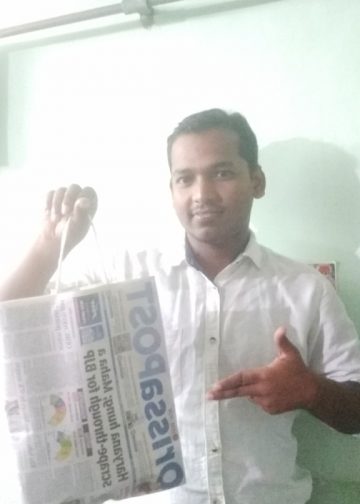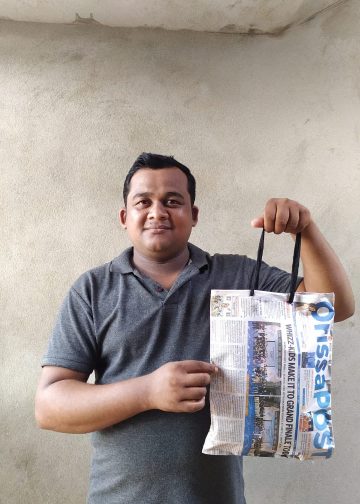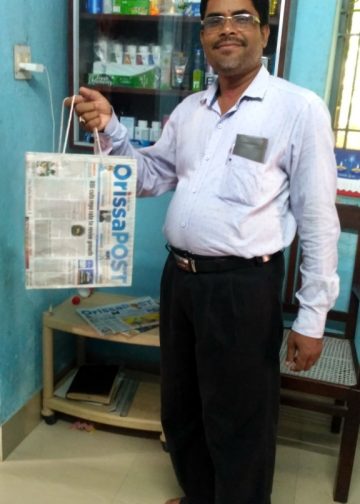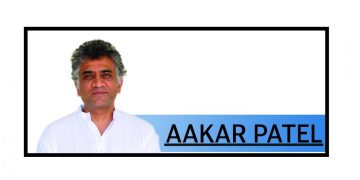New Delhi: About 57 per cent of Indian districts, home to 76 per cent of India’s total population, are currently at ‘high’ to ‘very high’ heat risk, according to a new study.
According to the study published Tuesday by Delhi-based climate and energy think-tank Council on Energy Environment and Water (CEEW), the 10 states and union territories with the highest heat risk include Delhi, Maharashtra, Goa, Kerala, Gujarat, Rajasthan, Tamil Nadu, Andhra Pradesh, Madhya Pradesh and Uttar Pradesh.
It also found that the number of very warm nights has increased faster than that of very hot days in the last decade.
Very warm nights and very hot days are defined as periods when minimum and maximum temperatures rise above the 95th percentile threshold, i.e., what was normal for 95 per cent of the time in the past.
As part of the study, CEEW researchers developed a Heat Risk Index (HRI) for 734 districts, using 40 years of climate data (1982-2022) and satellite images to study heat trends, land use, water bodies and green cover.
They also included data on population, buildings, health and socio-economic factors, along with night temperatures and humidity, for a comprehensive picture of heat risk.
“Our study found that 417 out of 734 Indian districts fell in the high and very high risk categories (151 under high risk and 266 under very high risk). A total of 201 districts fell in the moderate category and 116 fell in either the low or very low categories.
“This does not mean that these districts are free of heat risk but that it is relatively lesser than that of other districts,” Vishwas Chitale, senior programme lead at CEEW, said.
According to the study, the number of very hot days is increasing in India, but concerningly, the number of very warm nights is increasing even more, creating health risks.
High night temperatures are considered dangerous because the body does not get a chance to cool down. Increasing nighttime temperature is more common in cities because of the urban heat island effect, in which the metro areas are significantly hotter than their surroundings.
“The rise in very warm nights is most noticeable in districts with a large population (over 10 lakh), which are often home to Tier-I and Tier-II cities. In the last decade, Mumbai saw 15 additional very warm nights per summer, Bengaluru (11), Bhopal and Jaipur (7 each), Delhi (6), and Chennai (4),” the report said.
The study revealed that even in the traditionally cooler Himalayan regions, where heat thresholds are lower than in the plains and coasts, both very hot days and very warm nights have increased.
This could severely impact the fragile mountain ecosystems.
For example, in the union territories of Jammu and Kashmir and Ladakh, the number of very hot days and very warm nights rose by over 15 days and nights each summer.
The study also showed that north India’s summer humidity climbed from 30-40 per cent to 40-50 per cent in the last decade, worsening heat stress, especially in the Indo-Gangetic plain where farm workers toil outdoors.
Also, early mornings now feel hotter due to humid conditions. Cities like Delhi, Chandigarh, Jaipur and Lucknow have seen a 6 to 9 per cent rise.
CEEW researchers said cities like Mumbai, Delhi and much of the Indo-Gangetic plain face the highest exposure as high population density, dense buildings and existing socio-economic and health issues worsen heat risks.
Built-up areas grew rapidly between 2005 and 2023, especially in Tier-II and Tier-III cities, trapping heat.
Districts in Andhra Pradesh, Maharashtra and others face greater vulnerability due to high temperatures and health factors.
In contrast, districts in Odisha with more green cover and water bodies are better able to cope, they said. Extreme heat broke all records in 2024, the hottest year on record in India and globally. This year, the country recorded its first heatwave February 27-28, much earlier than April 5 last year.
Severe and frequent heatwaves are further burdening low-income households in the country, which often have poor access to water and cooling, and testing the endurance of outdoor workers toiling in the searing sun, forcing them to take frequent breaks.
Studies show India could lose the equivalent of 35 million full-time jobs and experience a 4.5 per cent reduction in GDP by 2030.
Experts say outdoor workers, pregnant women, the elderly, children and people with chronic health conditions are at higher risk of heat exhaustion and heatstroke.
According to the World Health Organization, more than 1,66,000 people died as a result of heatwaves between 1998 and 2017.
In one of its fiercest heatwave spells since 2010, India logged over 48,000 heatstroke cases and 159 heat-related deaths last year.
Experts say India is likely undercounting heat-related deaths.
PTI






































